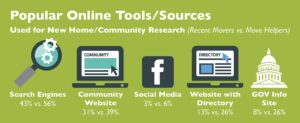Even with the big game between the Capitals and the Penguins scheduled for tonight, the weekly roundup is still the highlight of our Monday here at Creating Results.
This week, we look at Generation X’s impact on the workplace in the coming years. In addition, we share the insights of Joseph Coughlin, Massachusetts Institute of Technology AgeLab, regarding the five misperceptions of aging and technology.
MOST CLICKED: A Closer Look at Gen X in the Workplace
The Huffington Post recently published an article by generational expert Mary Donahue about how Generation X (people born between 1961 and 1981) will lead the charge in saving the workplace.
 According to Donahue, organizations should be taking care of their Gen X employees and looking to them for their intellectual capital. Failure to do so could result in consequences from which companies will struggle to recover.
According to Donahue, organizations should be taking care of their Gen X employees and looking to them for their intellectual capital. Failure to do so could result in consequences from which companies will struggle to recover.
The article offers some key insights into the minds of Generation X in contrast to their Baby Boomer and Millennial counterparts.
For one, Gen X employees tend to be the most stressed in any organization; They are managing Baby Boomers and Millennial, and usually don’t receive the same amount of attention from leadership as the other generations. They worked hard to get to where they are, but haven’t received the recognition for their efforts.
At Creating Results, we are reviewing the structure of our own organizations. Are our teams comprised of people from diverse generational backgrounds? Or are we paying more attention to certain groups (like the outgoing Baby Boomers and the incoming Millennial) than we are to others (Generation X)?
Without our Generation X teammates, there would be a huge gap in experience as Baby Boomers filter out of the full-time workforce, and Millennial move into more prominent positions. While Millennial are more than capable, Generation X will be the glue that holds organizations together for the coming years, and we need to make sure they are not overly put-upon and that their challenges and accomplishments are receiving the same amounts of attention as the requirement of other generations.
For companies offering senior products and services, insights from Gen X team members could prove to be vital to success. For example, at Creating Results, quite a few Gen X team members have recently explored senior living communities with their parents.
We often consult these team members for unique insights on challenges and opportunities with developing messaging that clearly resonates with them or their family members during the purchase journey. Collecting these insights is just one of many ways in which we help our clients improve their marketing strategy to meet their goals.
Click here to read the entire article.
MOST SHARED: Misperceptions of Technology and Aging
The use of technology by older-adults has become, and will continue to be, a hot topic for years to come.
As with any hot topic, there are misperceptions that people have about how seniors use technology. Joseph Coughlin of the Massachusetts Institute of Technology (MIT) AgeLab highlighted, what he believes, the top five misconceptions are in an article written for The International Association of Gerontology and Geriatrics:
- Old Age = Health
- Universal Design Either Means Too Little or Too Much
- We Need Products Exclusively for Older People
- The Older User is the Same as the Buyer
- Technology is Innovation
Of the five misperceptions, the one we will focus on is, “the older user is the same as the buyer.”
 As stated in the article, approximately one in four American families includes someone, most likely a woman, who has taken on the role of caregiver. The caregiver researches and shops for products and services that she (or he) feels will improve the life of their older loved one.
As stated in the article, approximately one in four American families includes someone, most likely a woman, who has taken on the role of caregiver. The caregiver researches and shops for products and services that she (or he) feels will improve the life of their older loved one.
We recommend that marketers in the senior products and services industry re-evaluate who they are targeting in the messaging for their products and services.
In many cases, marketers are targeting the senior individual who stands to benefit from the product. But should they be targeting the caregiver who is likely the one buying the product?
The main caregiver may find products and services during their research and conclude that they will be beneficial to their loved one. Think twice regarding who you are targeting. Not all “senior products” should be targeted directly to seniors.
Once you’ve decided who to target, you will need to think about whether you are reaching them through the right avenues.
For example, please look at the graphic below from our Social, Silver Surfers study:
As you can see, move helpers have different product research habits than movers (the people who will use the product). Relating this back to Coughlin’s misperception, in many cases, you won’t find potential buyers in the 40+ demographic in the same places you would find buyers in the 65+ demographic.
Adjust your resources accordingly to ensure you are reaching the right people through the right channels.
Click here to read about the four other misperceptions of technology, aging and business innovation.



